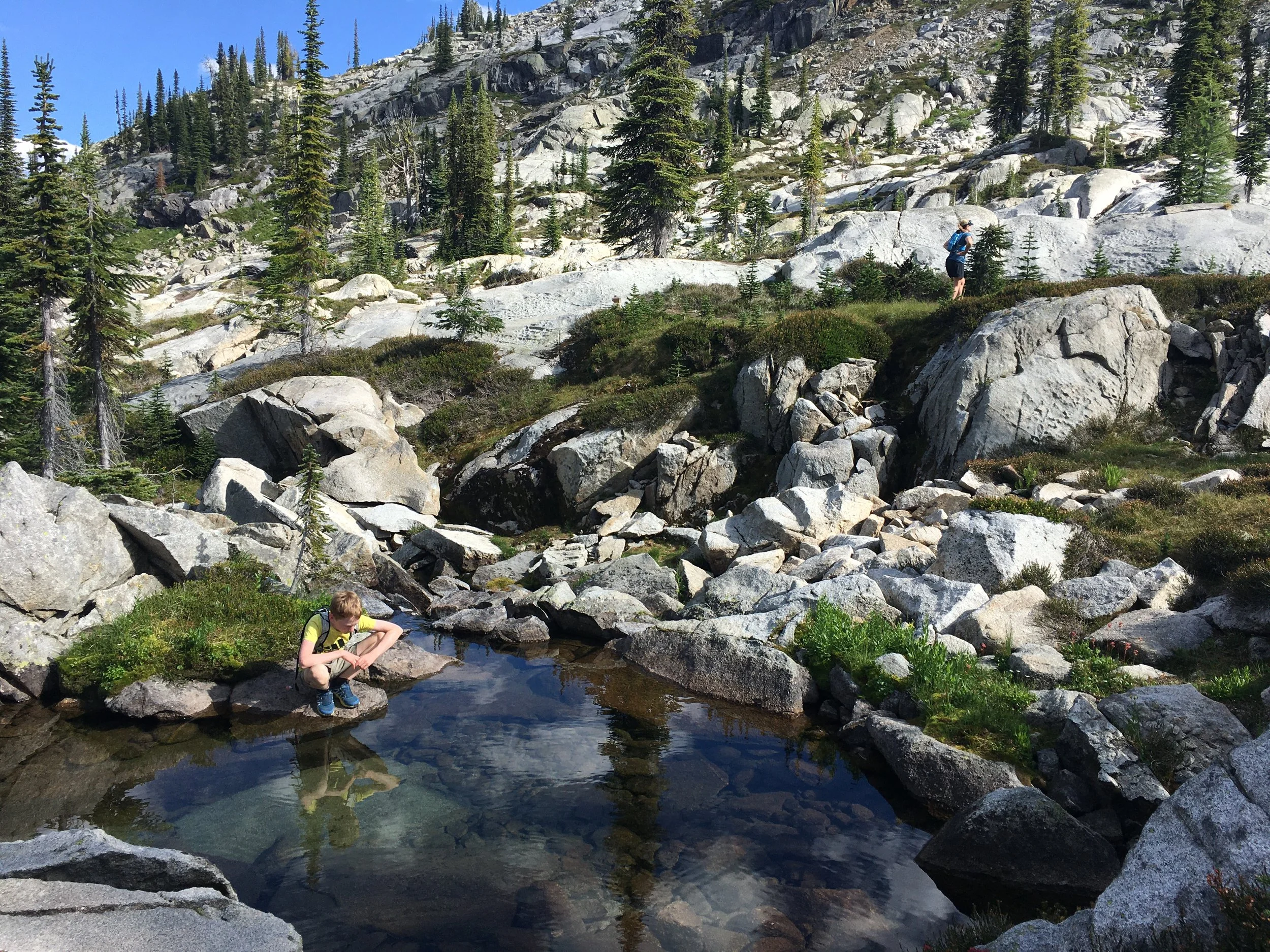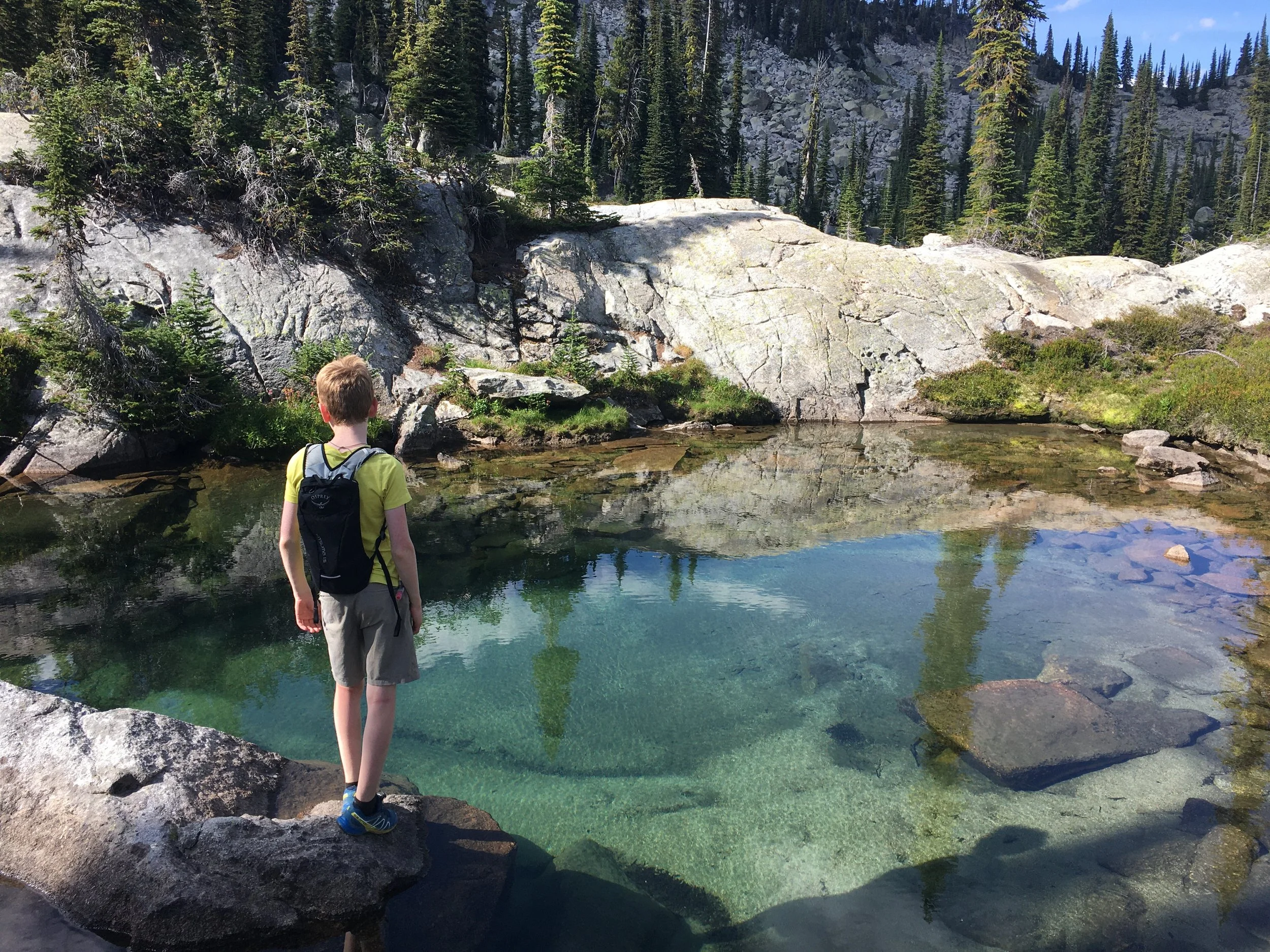Help us with some citizen science on your next trip to Kokanee Glacier Cabin
Kaslo Lake and the Kokanee Glacier Cabin (the blue roof between the two trees on the left) in Kokanee Glacier Provincial Park.
If you would like to be part of a forward-thinking climate solution, then we have the project for you! The Alpine Club of Canada is partnering with Living Lakes Canada on a pilot high-elevation monitoring program in Kokanee Glacier Provincial Park starting this summer.
Temperatures at higher altitudes are increasing more rapidly than at lower altitudes due to climate change. As a result, our fragile high-elevation ecosystems are expected to experience other climate impacts more rapidly than lower elevations. There is an urgency to start collecting data, as many high-elevation areas have not been actively monitored previously.
Living Lakes Canada, a water stewardship NGO whose work originated in B.C.’s Columbia Basin, is piloting a program to monitor and collect valuable data on high-elevation ecosystems. Long term monitoring will likely include measuring glacier mass balance in glaciated regions, monitoring physical and biological components of lakes and streams, as well as creating an inventory of flora and fauna in selected high-elevation areas. This is a trial program and the organization hopes to expand the project to Elk Lakes and the Bugaboos next summer.
Since many ACC members have strong ties to high-elevation landscapes, the program offers members an excellent community science opportunity to contribute to the understanding of climate impacts on these ecosystems.
HOW DOES THE PROGRAM WORK?
Volunteers are asked to help Living Lakes Canada create an inventory of plant and animal species within Kokanee Glacier Provincial Park. This data collection is made easy thanks to the popular citizen science app: iNaturalist. Download the free and simple-to-use app before you leave on your backcountry adventure. On the iNaturalist app, find and join the “Kokanee Glacier - High Elevation Monitoring'' project.
High in Kokanee Glacier Park.
While out recreating in the Kokanee Glacier area, take photos of any flora and fauna using the iNaturalist app. When back in cell service, you can upload your pictures/observations to the Living Lakes project via the app where they will be stored and reviewed by scientists, the iNaturalist community, and LLC employees.
As a secondary step, Living Lakes Canada will be extracting your data and uploading it to the Columbia Basin Water Hub, an established platform where water-related data is easily accessible to anyone who needs it, whether it's decision makers for Indigenous and non-Indigenous communities, researchers, community volunteers or members of the public wanting to learn more about their watershed.
The Living Lakes Canada team is excited to have ACC members help them pilot this important work. It’s part of a much larger scale monitoring network that will be implemented across B.C.’s Columbia Basin to help guide watershed management solutions moving forward.
We encourage any of our members recreating in the Kokanee Glacier Provincial Park area to sign up and contribute to understanding the effects of climate change on the high elevation ecosystems we all know and love.
Kokanee Glacier Provincial Park.
Any questions you may have can be directed to Living Lakes Canada Program Manager, Heather Shaw.
Learn more about the program here:



